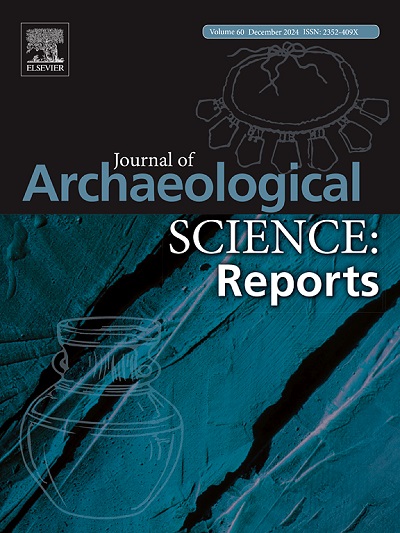Stone trowels during the Mid-Late Yangshao period (ca. 4000–3000 BCE) uncovered from Central China
IF 1.5
2区 历史学
0 ARCHAEOLOGY
引用次数: 0
Abstract
The process of building construction is perceived as a significant question of study on Neolithic settlements, as well as anthropogenic lime by pyrotechnology. However, the handstone tool for plastering has not received much attention. Samples of wall plaster with lime powder and certain handstones with residues of lime were unearthed at Mid-Late Yangshao Cultural sites in Central China. This study focuses on the investigation of handstones by employing scientific analysis, including Scanning Electron Microscopy and Energy Dispersive Spectroscopy (SEM-EDS), use-wear analysis by high quality digital microscope, and Fourier transformation infrared spectroscopy (FTIR). Two wall plaster samples, which were cut into 13 specimens, and 12 handstones with white residues were analyzed. The results revealed that the lime powder on wall plaster consists of anthropogenic calcined calcite, the handstone was likely used for plaster application by use-wear analysis, and FTIR spectroscopy confirmed the similarity in calcined calcite composition of the lime powder from wall plaster and surfaces of handstones. These findings not only offer a comprehensive understanding about the stone tools for applying plaster in Neolithic China, which are identified as stone trowels, but also expand the category of handstones significantly.
求助全文
约1分钟内获得全文
求助全文
来源期刊

Journal of Archaeological Science-Reports
ARCHAEOLOGY-
CiteScore
3.10
自引率
12.50%
发文量
405
期刊介绍:
Journal of Archaeological Science: Reports is aimed at archaeologists and scientists engaged with the application of scientific techniques and methodologies to all areas of archaeology. The journal focuses on the results of the application of scientific methods to archaeological problems and debates. It will provide a forum for reviews and scientific debate of issues in scientific archaeology and their impact in the wider subject. Journal of Archaeological Science: Reports will publish papers of excellent archaeological science, with regional or wider interest. This will include case studies, reviews and short papers where an established scientific technique sheds light on archaeological questions and debates.
 求助内容:
求助内容: 应助结果提醒方式:
应助结果提醒方式:


